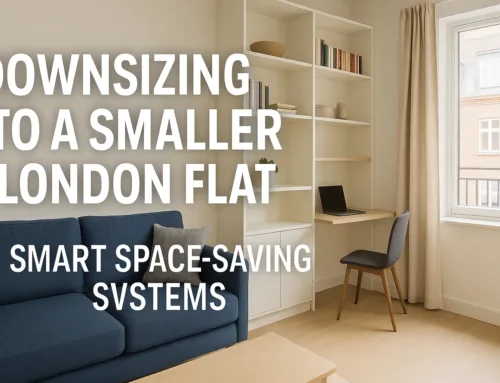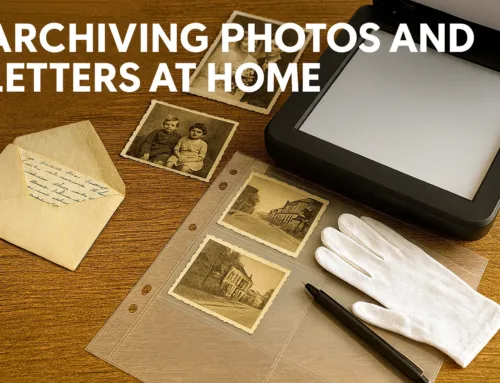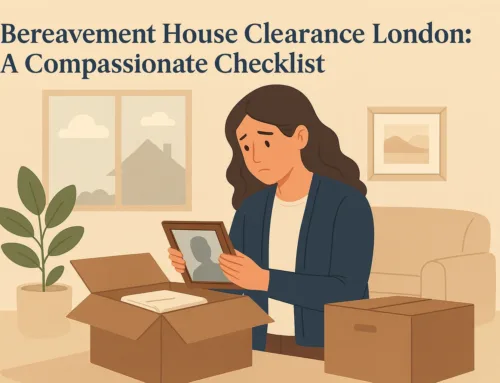Spring is here, and many of us want to declutter our homes. Whether you’re getting ready for a house clearance or just want to tidy up, having a plan is key.

Decluttering can be less daunting with a step-by-step guide. You’ll learn to sort items efficiently, decide what to keep and what to throw away. This way, you’ll end up with a tidy and organised home.
Key Takeaways
- Understand the importance of preparing for a house clearance
- Learn how to create a step-by-step spring checklist
- Discover effective decluttering advice for a stress-free experience
- Gain practical house clearance tips to simplify the process
- Achieve a more organised and clutter-free home with our guide
Understanding the Scope of Your House Clearance
Before starting your house clearance, know what you’re up against. A good plan starts with understanding the task, setting realistic times, and knowing your goals for the space.
Assessing Different Types of House Clearances
House clearances vary a lot. You might need to clear just some areas or the whole property. Special clearances, like after a bereavement or when moving out, have their own needs. Knowing what you’re dealing with helps you plan better.
Setting Realistic Timeframes for Completion
Setting a realistic time for your clearance is vital. Think about your property’s size, the clutter, and what resources you have. A good plan keeps you on track and makes the task easier.
Identifying Your End Goals for the Space
Knowing what you want the space for is key. Are you renovating, renting, or just want a tidy home? Your goals will help you decide what to keep, donate, sell, or throw away. This focus makes the process more effective.
| Clearance Type | Description | Considerations |
| Partial Clearance | Clearing specific areas or items | Identify areas or items to clear, assess clutter level |
| Full Clearance | Emptying the entire property | Assess entire property, consider professional help |
| Estate Clearance | Clearing a property after a bereavement | Handle with sensitivity, consider professional services |
Understanding your house clearance helps you tailor your approach. This ensures a smoother and more efficient process.
Planning Your House Clearance Strategy
For a successful house clearance, you need a solid plan. A good plan keeps you organised, manages your time well, and reduces stress.
Creating a Room-by-Room Clearance Plan
Start by making a room-by-room plan. Walk through your home, check the clutter, and pick the most urgent areas. Breaking it down into smaller tasks makes it less overwhelming.
Establishing Priority Areas in Your Home
Identifying priority areas is crucial. Focus on the most cluttered or disorganised rooms first. This way, you tackle the biggest challenges first, making the process more efficient.
Building a Clearance Calendar with Deadlines
Creating a clearance calendar with deadlines is key to staying on track. It helps ensure your house clearance is done on time. By setting realistic targets, you can monitor your progress and make necessary adjustments.
This calendar is a valuable tool in your house clearance journey. It keeps you focused and motivated.
By using these tips, you’ll have a successful and stress-free clearance. You’ll reach your waste disposal goals easily.
Essential House Clearance Tips for a Smooth Process
Starting a house clearance can seem daunting. But with the right tips, it becomes easier. A well-planned approach makes the process efficient and stress-free.
Gathering Necessary Supplies and Equipment
Before you start, gather the right supplies and equipment. You’ll need sturdy boxes, bin bags, markers, and labels. The right tools make sorting and packing easier.
Setting Up Sorting Stations in Your Home
Setting up sorting stations helps organize the clearance. Designate areas for different items, like keep, donate, sell, and dispose. This keeps you organized and makes decisions easier.
Enlisting Help from Friends and Family
House clearance is a big task. Having help from friends and family makes it more enjoyable. It also helps share the workload.
| Task | Supplies Needed | Tips |
| Sorting | Labels, Markers | Be decisive and sort items into clear categories. |
| Packing | Sturdy Boxes, Bubble Wrap | Pack fragile items carefully and label boxes clearly. |
| Disposal | Bin Bags, Skip Hire | Check local regulations for disposing of large items. |
Following these tips ensures a smooth house clearance. With the right preparation and support, you can tackle the task confidently.
Decluttering Methodologies That Work
Mastering decluttering is crucial for house clearance. Effective methods simplify the process, making it less overwhelming. We’ll explore strategies that work well for decluttering homes.
The Four-Box Method: Keep, Donate, Sell, Dispose
The Four-Box Method is a simple and effective decluttering technique. It sorts items into four categories: keep, donate, sell, and dispose. This method helps make quick decisions, speeding up the decluttering process.
Applying the 12-Month Usage Rule
The 12-Month Usage Rule is another effective strategy. It suggests items not used in 12 months can be disposed of or donated. This rule helps in making decisions about items no longer needed.
The KonMari Method for British Homes
The KonMari Method, made famous by Marie Kondo, focuses on decluttering items that bring joy. It’s a popular method worldwide, but it can be tailored for British homes. It teaches us to declutter with a mindful approach, valuing the emotional worth of our belongings.
Here’s a comparison of these decluttering methodologies:
| Methodology | Key Principle | Best For |
| Four-Box Method | Sorting into keep, donate, sell, dispose | Quick decision-making |
| 12-Month Usage Rule | Assessing usage over the past year | Tough decisions on unused items |
| KonMari Method | Decluttering based on joy | Mindful decluttering and emotional attachment |
Using these decluttering methods can make house clearance easier and less stressful. Whether you like a simple sorting method or a more thoughtful approach, there’s a strategy for you.
Managing the Emotional Aspects of House Clearance
House clearance is more than just getting rid of clutter. It’s also about dealing with the emotions attached to our belongings. This process can be tough, especially when we’re letting go of items that hold special memories.
Coping with Attachment to Possessions
Dealing with the emotional attachment to our belongings is a big challenge. It’s important to understand the emotional value of certain items. You might want to keep some items in a ‘memory box’ if they’re too precious to part with but don’t need to be displayed.
Supporting Elderly Relatives Through the Process
Helping elderly relatives with house clearance can be tough. It’s key to be empathetic and understanding. Start by talking openly about the process and involve them in decisions when you can.
Celebrating Progress and Milestones
It helps to celebrate your progress and milestones during house clearance. Acknowledge the efforts made and the steps taken towards your goals. This positive feedback can make the emotional journey easier.
By focusing on the emotional side of house clearance, we can make it less stressful and more meaningful. For more tips and advice, look into resources that offer support and guidance.
Tackling Sentimental Items and Memorabilia
Handling sentimental items and memorabilia can be emotional. The right decluttering advice can help simplify this task. It’s common to feel overwhelmed by items that hold cherished memories.

Creating Digital Archives of Photographs and Documents
Creating digital archives of photos and important documents is a good strategy. Scanning old photos and saving them digitally keeps memories safe while reducing clutter. Use cloud storage to keep these archives safe and easily accessible.
Making Decisions About Family Heirlooms
Deciding what to do with family heirlooms can be hard. Consider the emotional and historical value of each item. If an item is truly meaningful, think about passing it down or displaying it in your home.
Creative Ways to Preserve Memories While Reducing Clutter
For items that are hard to part with, think creatively. You could make a memory box with a few select items or take photos before letting them go. This way, you keep the memory while decluttering your space.
Sorting and Categorising Household Items
The first step in a successful house clearance is sorting and categorising items. This makes the task simpler and helps you make informed decisions about what to keep or discard.
Furniture and Large Items Assessment
Start by checking the condition of big items like furniture and appliances. See if they work and if they mean something special to you. This helps you decide what to do with them.
| Item | Condition | Action |
| Furniture | Good | Donate/Sell |
| Appliances | Functional | Donate/Sell |
| Large Items | Damaged | Dispose |
Handling Books, Clothing, and Small Possessions
For smaller things like books, clothes, and home items, sorting is key. Use the four-box method: keep, donate, sell, and throw away. This makes choosing what to do with them easier.
Dealing with Loft and Garage Accumulations
Lofts and garages often get cluttered with things you don’t need anymore. Sorting them out needs patience and a plan. Start by removing items, then sort and decide what to do with each one.
By following these steps, sorting and categorizing your items becomes easier. This makes clearing your house less scary and more manageable.
Sustainable Disposal Options for Unwanted Items
Clearing your home is not just about getting rid of things. It’s also about doing it in a way that’s good for the planet. Think about how your choices affect the environment as you sort through your stuff.
Using UK recycling centres and council services is a great way to dispose of items sustainably. Many councils have special services for big items and hazardous waste. This makes it easier to get rid of things responsibly.
UK Recycling Centres and Council Services
UK recycling centres take many materials, like paper, cardboard, glass, and some plastics. Taking your recyclables there helps reduce landfill waste.
| Material | Recyclable | Disposal Method |
| Paper and Cardboard | Yes | Recycling Centre |
| Glass | Yes | Recycling Centre |
| Plastics | Partially | Check with Local Council |
| Hazardous Waste | No | Special Collection Service |
Responsible Disposal of Hazardous Materials
Items like batteries, electronics, and chemicals need special care. Many councils have special days or places for hazardous waste. This keeps the environment safe.
Skip Hire Considerations and Regulations
Choosing a skip hire company that follows the rules is important. Make sure they are licensed and dispose of waste properly. Know what can go in skips and any rules about using them.
By choosing sustainable disposal methods, you can lessen the environmental impact of clearing your house. This helps make the future greener.
Donating and Selling Valuable Items
Donating and selling items is a big part of clearing your house. It’s a chance to help others or make some money. As you sort, you’ll find things that are still good but you don’t need anymore.
British Charity Shops and Collection Services
Many British charity shops take donations of used items, like clothes, furniture, and household goods. Places like Cancer Research UK, British Heart Foundation, and Oxfam have lots of shops and collection services. Giving to these charities not only clears your space but also helps important causes.

Car Boot Sales and Local Selling Opportunities
Consider selling items at car boot sales or through local online groups if they’re still in good shape. It’s a fun way to make money and clear out unwanted items. You might even earn some extra cash for your house clearance.
Online Platforms Popular in the UK Market
Online platforms like eBay, Gumtree, and Facebook Marketplace are great for selling items fast. They’re well-liked in the UK and help you reach lots of people. This way, your items go to those who really value them.
Managing Paperwork and Administrative Tasks
House clearance often overlooks paperwork and admin tasks. It’s key to sort documents, dispose of sensitive info, and follow UK guidelines.
Organising Important Documents
First, gather all important papers like financial records and ID. Use a system to sort them. This makes it easier to decide what to keep, archive, or throw away.
Use a simple filing system with labeled folders or digital storage. For help with property clearance, get advice from experts.
Shredding and Disposing of Sensitive Information
Dispose of sensitive info like financial documents securely to avoid identity theft. Use a good shredder or a professional service that follows UK data protection.
For non-sensitive documents, recycling is a good option. Many councils offer recycling services, supporting sustainable home organization.
UK-Specific Document Retention Guidelines
The UK has rules on keeping certain documents. For example, keep tax records for six years and property deeds forever. Knowing these rules helps avoid legal problems.
| Document Type | Retention Period | Disposal Method |
| Tax Records | 6 years | Shredding or Secure Disposal |
| Property Deeds | Indefinite | Safe Storage |
| Personal Identification Documents | Until No Longer Valid | Shredding or Secure Disposal |
By following these guidelines, you can manage house clearance paperwork well. This ensures a smooth start to your new life.
When to Hire Professional House Clearance Services
Knowing when to hire professionals for house clearance is crucial. It’s especially helpful for large estates or cluttered homes.
Evaluating the Benefits of Professional Help
Professional services bring efficiency, safety, and less stress. They have the right tools and skills for any clearance task.
| Benefits | Description |
| Efficiency | Professionals can complete the task quickly and effectively. |
| Safety | They are equipped to handle hazardous materials and heavy items. |
| Stress Reduction | By handling the clearance, they alleviate the burden on homeowners. |
Look for companies in trade associations or with good online reviews. This ensures you get reliable service.
Understanding Costs and Service Agreements
Costs depend on the items, location, and services needed. Make sure you understand the agreement before hiring.
Conclusion: Embracing a Fresh Start After Your House Clearance
Completing house clearance is a big achievement, starting a new chapter. This guide helps you declutter and renew your space.
Your home is now ready for a fresh start. Keep it organized and enjoy the benefits of decluttering. It improves your living space, simplifies your life, and boosts your well-being.
As you move forward, remember that keeping your home clutter-free is a continuous effort. But with the right strategies and mindset, it can become a lasting part of your lifestyle. By embracing decluttering and home organization, you can enjoy a more streamlined, stress-free living environment. This environment will support your goals and aspirations.





